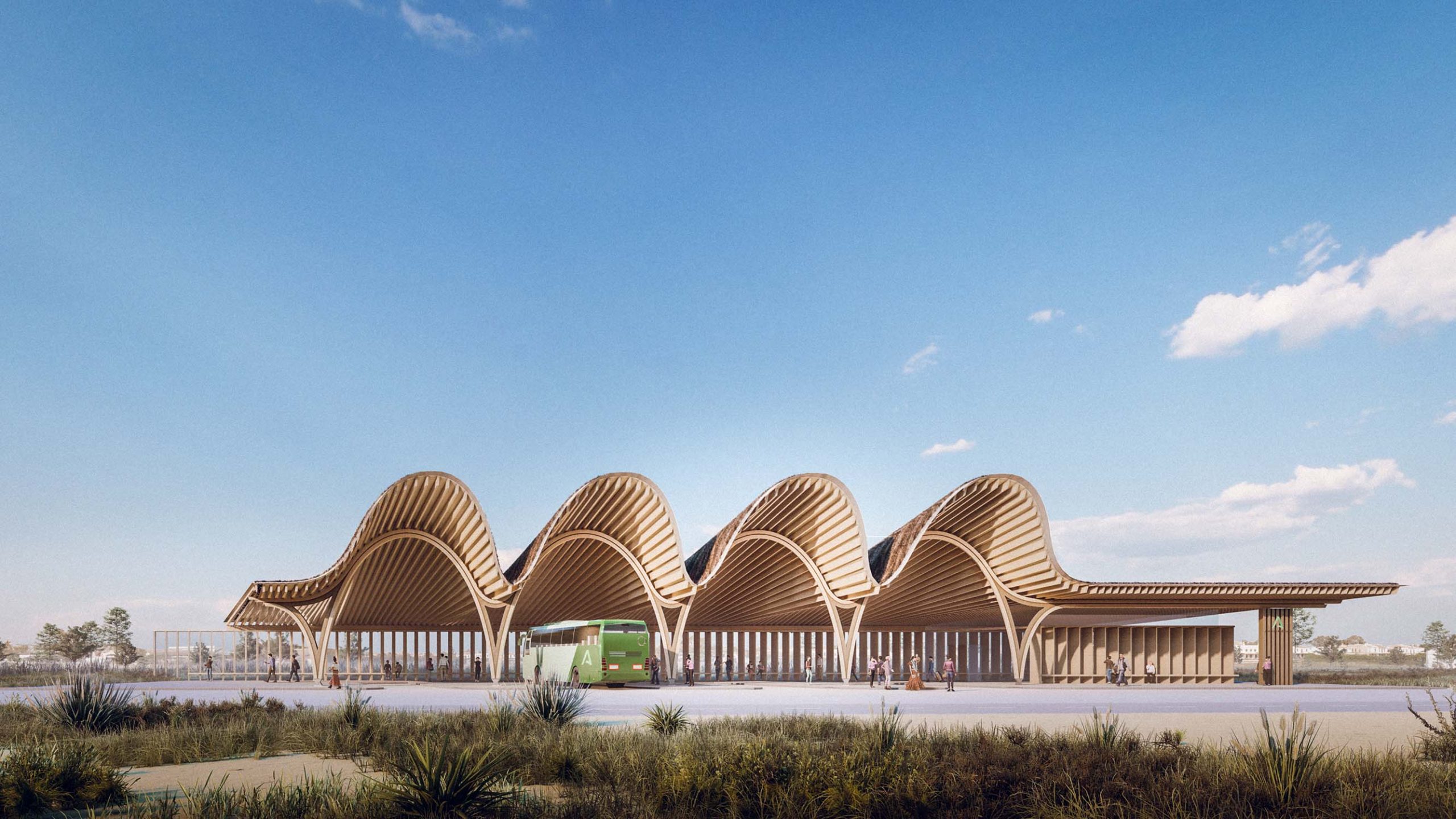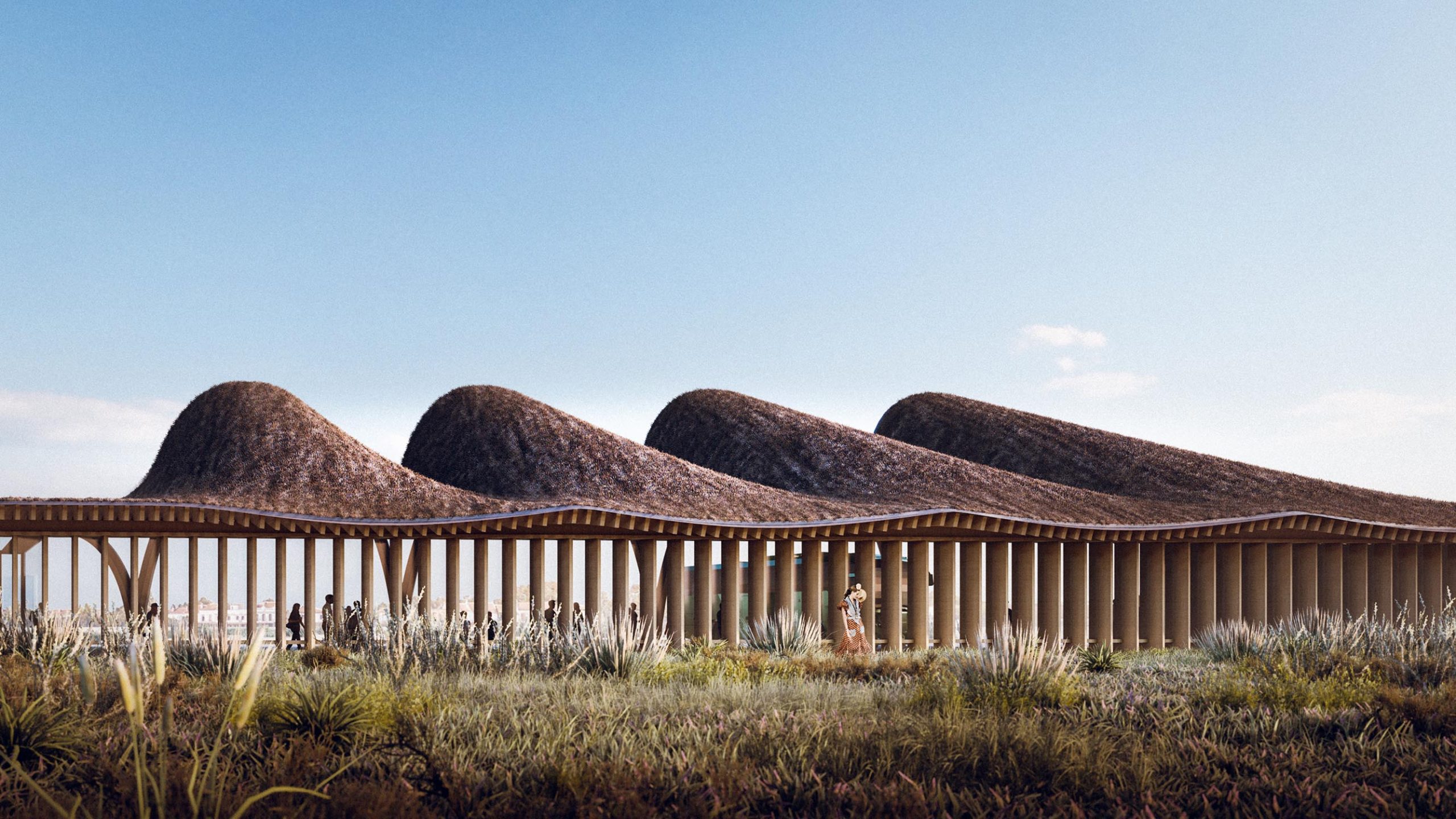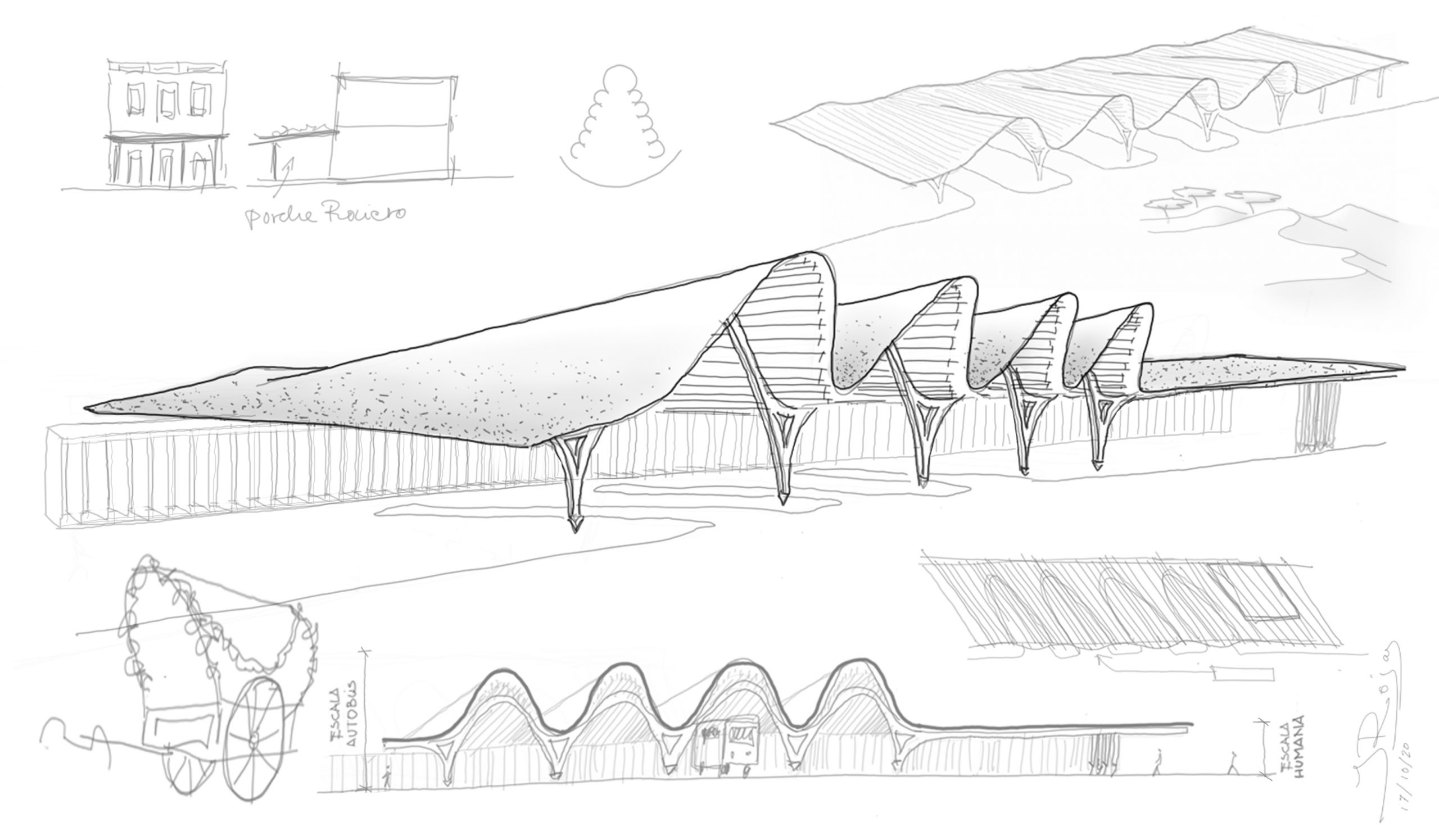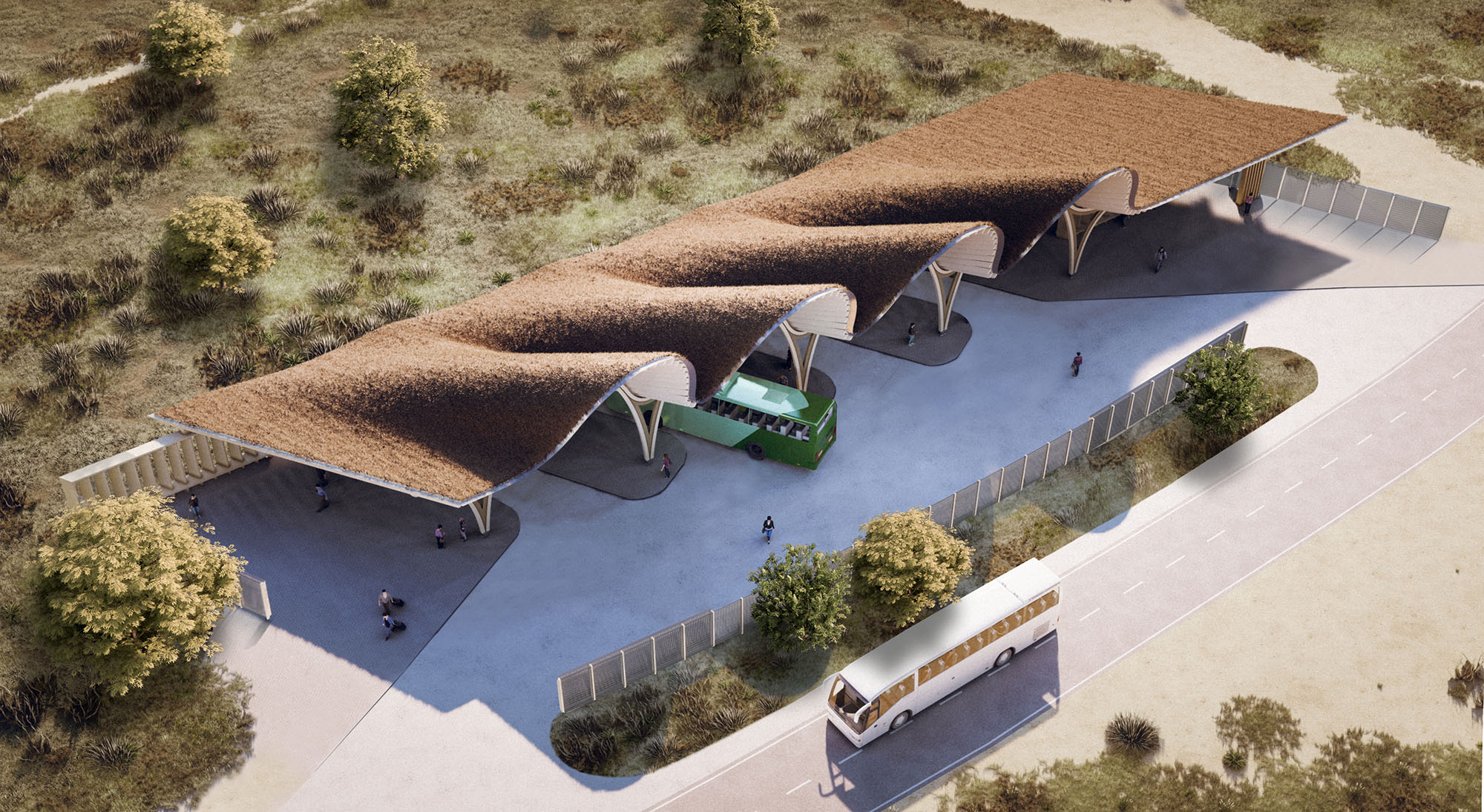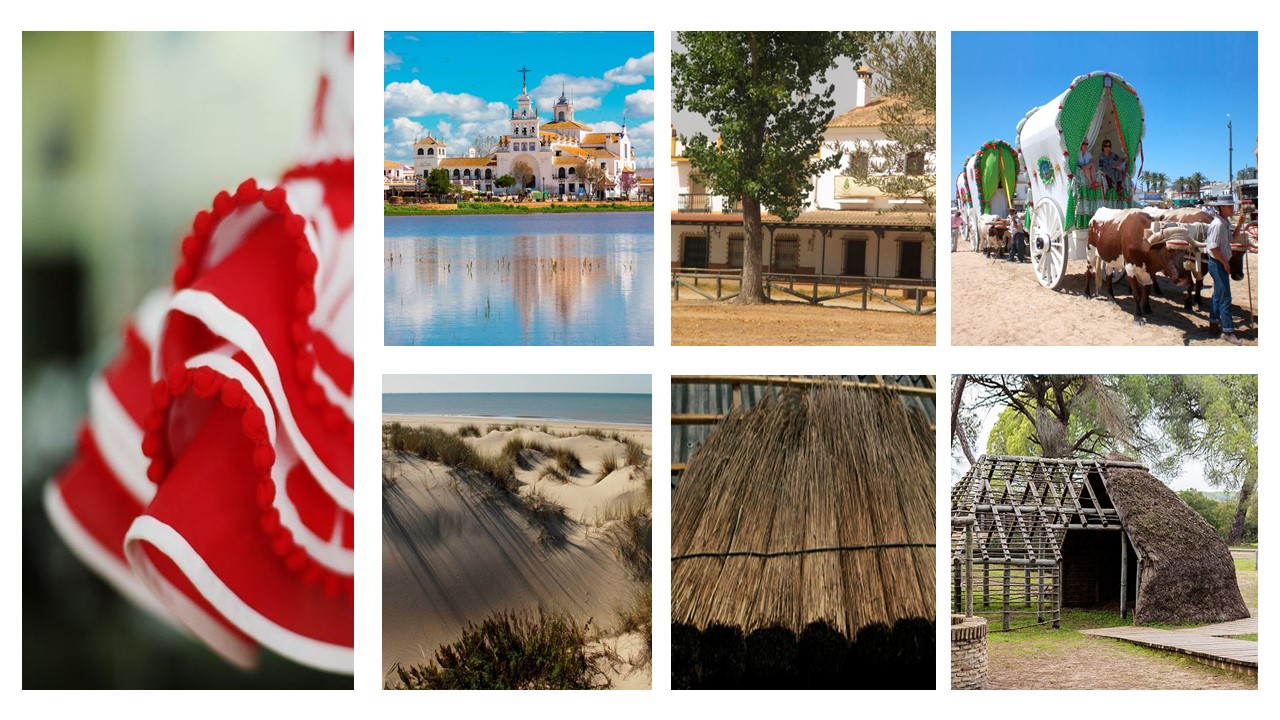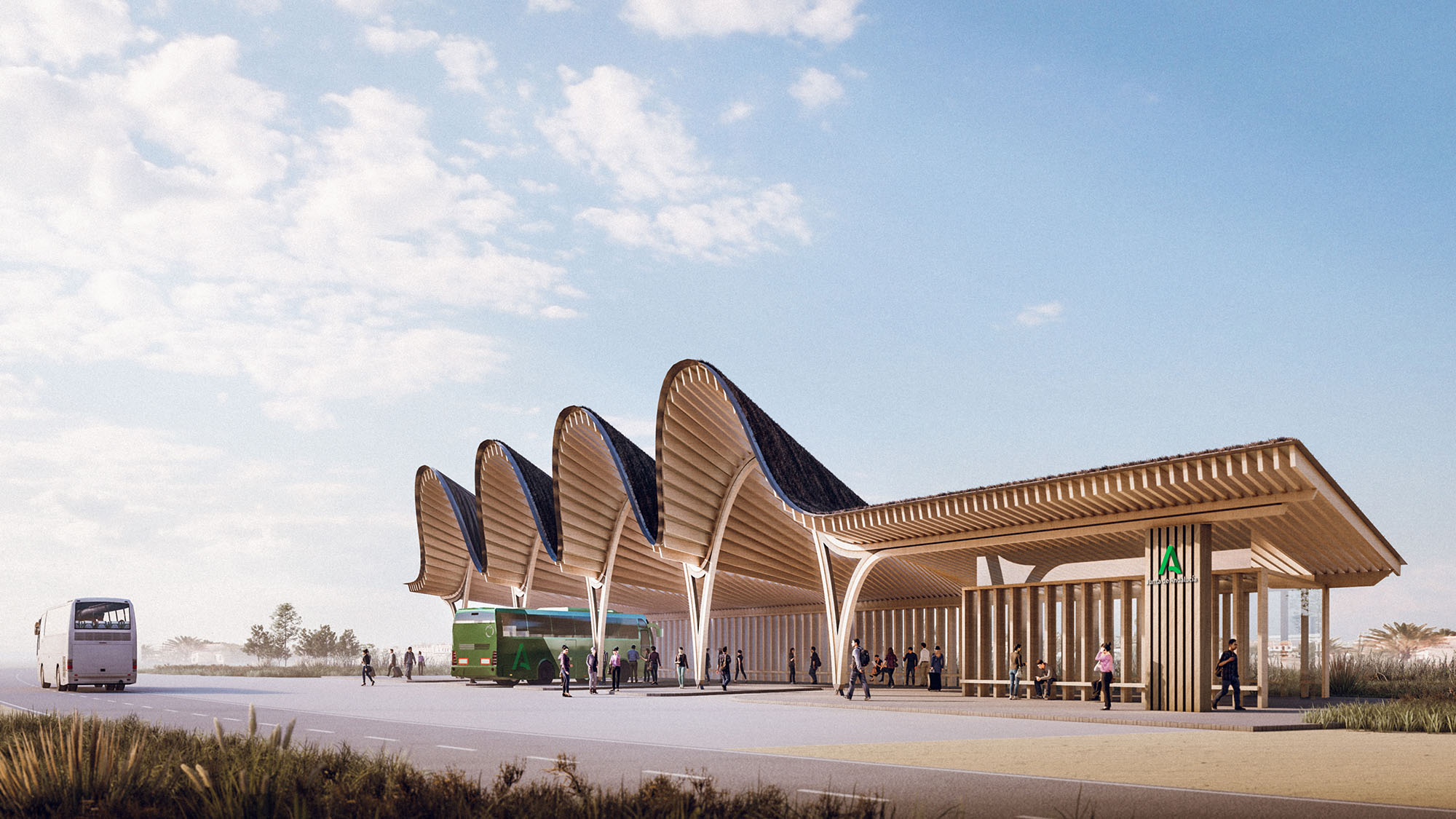
TRANSPORT INTERCHANGE, EL ROCÍO (ALMONTE, HUELVA)
COMPETITION: FIRST PRIZE
CLIENT: JUNTA DE ANDALUCÍA, CONSEJERÍA DE FOMENTO, INFRAESTRUCTURAS Y ORDENACIÓN DEL TERRITORIO, DIRECCIÓN GRAL. DE MOVILIDAD
BUILT AREA: 1.636,80m2
The project resolves the functional need to create a space for the comfortable waiting of bus passengers in El Rocío, taking the opportunity to provide the village with a significant public building. The strategy provides contemporary architectural quality while respecting the very important natural, cultural and social heritage of the site.
For this reason, a wooden building is proposed which, as a lightweight construction and with materials that evoke those of the area, dialogues in a clear and respectful way with the natural environment in which it is inserted. This is true not only from a landscape and qualitative point of view, but also from a quantitative and technical point of view. The global goal in construction to combat climate change is to design buildings with a zero or near-zero ecological footprint, i.e. with zero or near-zero CO2 emissions during construction and operation. The new transport interchange in El Rocío exceeds these objectives, achieving not only zero CO2 emissions, but also negative emissions. The building will be constructed in certified wood from ecological plantations (forests planted to produce wood). As these trees grow, they remove CO2 from the atmosphere by fixing it in their wood. It has been calculated that the construction of this building will remove 183 tonnes of CO2 from the atmosphere, which is a significant contribution to the fight against climate change.
On the other hand, the building also dialogues respectfully with the architectural environment of El Rocío. It takes references from the traditional light constructions of the marshes. The huts and roofs of wood and heather (formerly of reed or chestnut) or the light porches on the façades of the Rocío houses. The undulating roof also refers to the dunes of the reserve.
The important social reality that characterises the village of El Rocío is also echoed in the building. The natural way in which the vaults that house the bus bays of this building are integrated into this landscape is also due to the fact that it clearly refers to the silhouette of the Rocío carts.
Finally, the project also follows the architectural tradition of strong rhythms and geometries that characterises transport buildings all over Europe, from St. Pancras (London) to Santa Justa (Seville).


